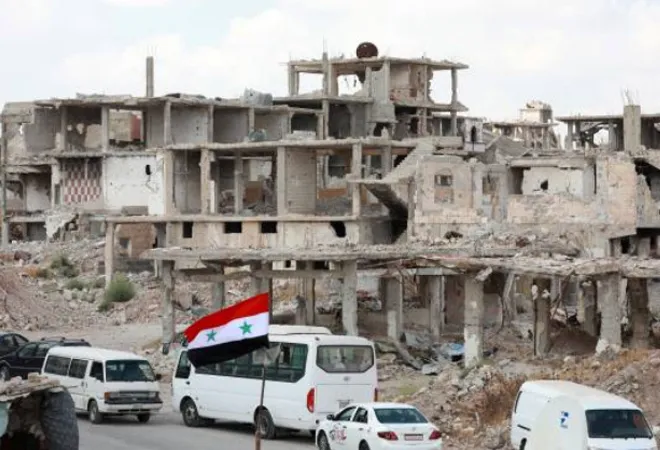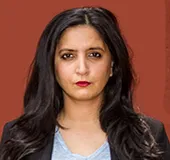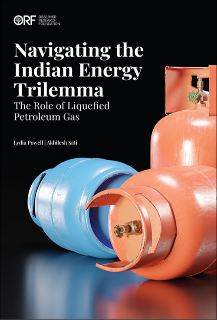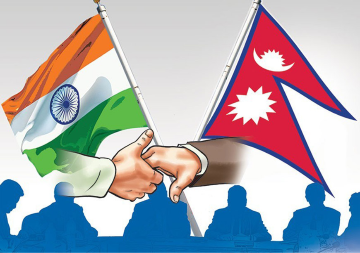
Bashar al-Assad’s government has reclaimed the entire territory in Daraa in strategically significant Southern Syria under a Russia-mediated truce. The terms allowed the rebels who gave up their weapons to stay behind but hundreds of others were bussed to rebel-held areas north of the country.
The control over Daraa leaves just two more areas outside of government control: The northeast which is under America-backed Syrian Democratic Forces (SDF), and Idlib province which is under the control of extremist Islamist group Hayat Tahrir al-Sham (HTS).
Daraa was often described as the cradle of the Syrian uprising. It is where anti-Assad graffiti by teenagers and their subsequent arrests and death under suspicious circumstances caused a massive outrage and protests.
Under a Russia-mediated deal between the rebels and the government back in 2018, the rebels could keep their light arms and be in charge of their security while government institutions resumed services to provide basic services to the population. Assad’s army was limited to some checkpoints. But tensions between the army and rebels continued and the two sides regularly attacked each other.
This August, the government seemed to have managed to convince Russia to back off while it took definitive control of the entire area. Daraa was often described as the cradle of the Syrian uprising. It is where anti-Assad graffiti by teenagers and their subsequent arrests and death under suspicious circumstances caused a massive outrage and protests.
But a decade later Assad is firmly in control of nearly the whole country and Syria’s Arab neighbours seem to prefer him over the rebel groups to contain political Islamists of the Muslim brotherhood, Iran and Turkey.
While Israel is worried about the expansion of Iran-backed militias on the border, Jordan needs Syria to stabilise for the sake of its economy.
Daraa straddles the borders with Jordan and Israel—both of whom are America’s allies and have very specific concerns. While Israel is worried about the expansion of Iran-backed militias on the border, Jordan needs Syria to stabilise for the sake of its economy. In 2020, more than 15 percent of Jordan’s population was deemed poor while the unemployment rate rose to 23 percent. The presence of a large number of Syrian refugees, 13 percent of the total population, further strained the economy. Jordan wants to trade with and through Syria and in fact convinced American President Joe Biden on a visit to the US, this July that Jordan must be allowed to sell its electricity to Lebanon through the Syrian electricity grid.
The United Arab Emirates (UAE) supported the rebels in Daraa through humanitarian aid but they have steadily warmed up to Assad. Neither the UAE nor the Kingdom of Saudi Arabia want to hand over Syria to Iran and instead see Assad as the only one who can balance Iranian influence in the region. Moreover, Assad can also be useful in countering Turkish footprint in Arab lands.
The United Arab Emirates (UAE) supported the rebels in Daraa through humanitarian aid but they have steadily warmed up to Assad.
US Secretary of State Antony Blinken criticised the Syrian government’s assault on Daraa and described it as ‘brutal,’ He called for an immediate end to the violence and to the siege that deprived civilians of food and basic medicines. "We reiterate calls for a nationwide ceasefire in line with UNSCR 2254," Blinken tweeted.
But the US’s Syria policy is unclear. Firstly, the Biden administration’s main mission in the Middle East is to revive the nuclear deal with Iran and stop it from making a bomb and not resolving the Syrian crisis. Secondly, it wants to expedite its retreat from the Middle East and after Afghanistan, it will likely pull out its remaining troops from Iraq and then probably from Syria. Finally, Syria is just not a priority for Biden and he rather let the regional actors decide the course they wish to take to contain Iran and its militias in the region, including in Syria.
US Secretary of State Antony Blinken criticised the Syrian government’s assault on Daraa and described it as ‘brutal,’
While officially the US is standing by its old position—a political resolution based on United Nations Security Council resolution 2254—it is also making things easy for Assad. The first sign was visible when the US agreed to give a sanctions waiver to countries intending to provide energy to Lebanon through Syria. The Caesar Act passed by the US bans countries from carrying out business with the Assad-led Syrian government.
America’s Syria policy is still evolving but Assad’s rehabilitation by the Arab world is only a matter of time. The Arabs who supported the rebels of Daraa are keen to embrace Assad.
The views expressed above belong to the author(s). ORF research and analyses now available on Telegram! Click here to access our curated content — blogs, longforms and interviews.




 PREV
PREV


